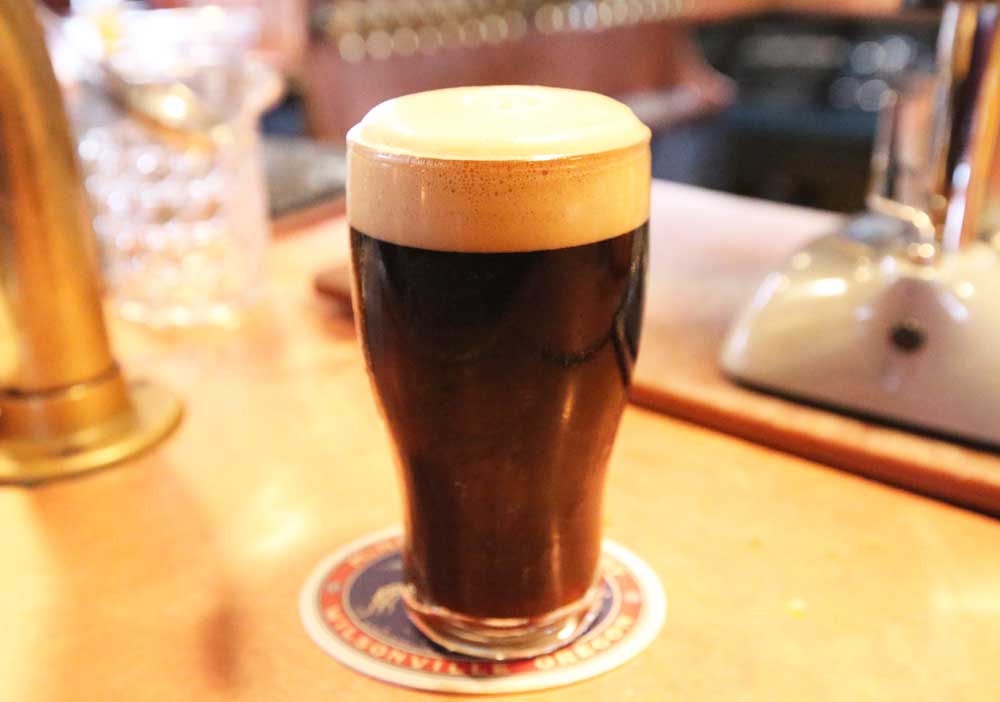Nitrogen makes Guinness, local nitros luscious
Published 11:30 am Wednesday, March 15, 2023

- A pint of freshly poured draft Nitro Irish Stout at McMenamins Old St Francis School in Bend Monday afternoon.
St. Patrick’s Day falls on Friday this week, and while there will be plenty of beer of all kinds consumed, one beer is almost synonymous with the holiday — Guinness Stout.
For many, the defining characteristic of Guinness is its creamy, silky texture and dense, thick head of foam, intimately familiar to anyone who has witnessed the ritual of a draft pour of the stout.
Trending
As the beer is poured into the glass, the foam piles up immediately, seeming to dominate the pour.
The brown-black liquid swirls and undulates as it gradually separates from the cream-colored head, similar to an ice cream float, and tiny bubbles appear to cascade down, not up, the inside of the glass. This process can take a minute or more.
Beer might range in carbonation levels from flat to fizzy, but most beers don’t approach this level of creaminess. So what gives Guinness its luscious look and feel? The answer is nitrogenation.
I’ve mentioned “nitro beer” several times over the years without elaborating on what that means. Most beer is carbonated with carbon dioxide gas, because CO₂ is a natural by-product of fermentation; it’s also fairly soluble in liquid (easily absorbed) under pressure. When the pressure equalizes (pouring into a glass), the gas is released and the bubbles float to the surface.
Whether naturally conditioned by the yeast or force carbonated, CO₂ is what gives beer its fizz.
In the 1950s, Guinness explored alternatives to standard carbonation, and developed and popularized a method for using nitrogen to infuse and dispense the beer rather than CO₂. Subsequently, Guinness became iconic for the nitro pour familiar today.
Trending
Nitrogen is less soluble in liquid than carbon dioxide, so that when dissolved in beer, the beer has a smoother texture and might seem flat compared to regular beer. It also produces smaller bubbles, resulting in denser, thicker foam.
There is still some CO₂ in the beer with the nitrogen, and it’s the difference in the size of the bubbles that creates the downward-cascading appearance of a fresh pour. Essentially, the smaller nitrogen bubbles are pushed out of the way by the rising CO₂ ones, causing them to be pushed downward at the edges of the glass. The result is a visual treat.
Stouts and other dark beers are the best known styles to get the nitro treatment, and some breweries, such as Left Hand Brewing Co. of Colorado, have become known for their nitro lineup.
Locally, McMenamins Old St. Francis School is currently serving its McMenamins Irish Stout on nitro, while Deschutes Brewery is pouring nitrogenated versions of both Obsidian Stout and its own Irish Stout. In Redmond, Wild Ride Brewing Co. will serve Nut Crusher Peanut Butter Porter as a nitro pour.
However, any style of beer can be nitrogenated to the same effect as darker ones, and right now there are several non-stout nitro beers available as well.
Each year Deschutes releases its late winter seasonal Red Chair NWPA, and it has become a tradition for the brewery to serve a nitro version of the beer. At the company’s tasting room on Simpson Avenue, Nitro Red Chair is currently pouring.
10 Barrel Brewing Co. has two different nitro beers on tap at its two pubs, according to its website. At its East Bend location, an English-style Amber Ale is served on nitro, while at the West Bend pub on Galveston, Evolve Belgian Strong Ale is available.
Whether your St. Patrick’s Day celebrations involve Guinness Stout or not, keep an eye out for other nitro beers to explore, both in cans and on draft.
McMenamins Irish Stout — McMenamins Old St. Francis School
Local Route Lager — Bevel Craft Brewing
Nitro Milk Stout — Left Hand Brewing
India Pale Ale — Van Henion Brewing
StaRPM IPA — Ecliptic Brewing & Boneyard Beer








